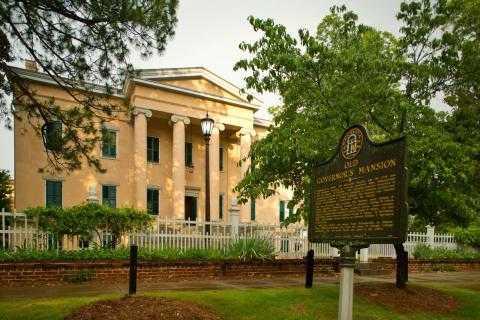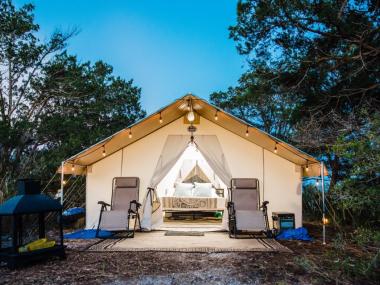Georgia's State Capitals (1804- 1868)
Everyone is familiar with Atlanta as Georgia’s state capital, but did you know it is the 17th location of the capital? While some cities have had the honor as many as four times, other locations were temporary and some cities no longer exist.
For the first 43 years of Georgia’s existence, the cities that had been known as the capital were in the southeastern part of the state: Frederica and Savannah. When Savannah fell to the British forces at the beginning of the Revolutionary War, the capital moved to Augusta and then shuffled around to various sites in Wilkes County, Ebenezer and possibly even South Carolina before settling once again in Savannah in 1782.

After a 14-year shuffle between Savannah and Augusta, in 1786 the legislature established a commission to find a permanent location for Georgia’s capital. Ten years later, the capital was established in the new city of Louisville, but it wasn’t long until lawmakers were looking for a new capital site. In 1804, they passed an act to build a new capital in Baldwin County on wilderness land. The new town would be called Milledgeville after then-Governor John Milledge.
The 500-acre town would be divided into 84 four-acre squares and four 20-acre public squares. The town’s design was to be modeled after previous Georgia capital Savannah and current United States capital Washington, D.C.
Construction of the new state capital took only two years, and in 1807, following a procession from Louisville, the government took its place in the new (yet still unfinished) statehouse. Known as America’s first Gothic revival style public building, the new statehouse would soon outgrow its tenants as the size and population of the state of Georgia rapidly expanded. The building required major additions in 1828 and 1837.
In 1825, Revolutionary War soldier the Marquis de Lafayette visited Milledgeville, marking what many view as its coming-of-age moment. Also marking the occasion were receptions, a barbecue, a formal dinner and a grand ball in the Marquis’s honor.
The town was booming with Oglethorpe College opening its doors, the Georgia Penitentiary being built, major churches commissioning large places of worship to be built and the encouragement of community staples like newspapers, banks and schools.
In 1839, work on what is now known as the Old Governor’s Mansion was completed. It would serve as home to 10 governors and their families, including Governor George R. Gilmer, Howell Cobb (1851-53), Joseph E. Brown (1857-65), Charles McDonald (1839-43), George W. Crawford (1843-47), George W. Towns (1847-51), Herschel Johnson (1853-57), Provisional Governor James Johnson (June-November 1865), Charles Jones Jenkins (1865-68), and Provisional Governor General Thomas Ruger (January-July 1868).
During Sherman’s march through Georgia to Savannah, he took up residence in the house while his 30,000 soldiers lived in Milledgeville.
Governor Brown resided in the mansion for longer than any other governor, serving four terms. His period of governing lasted from before the Civil War, through the battles and into the Reconstruction period. He and his family are now interred at Oakland Cemetery in Atlanta.
Following the incorporation of what had been Indian Territory into the State of Georgia, and as the railroad companies gained influence in the government, calls started to come from within the legislature to move the capital once again.
Visit History:
Old Governor's Mansion – Now open Tuesday through Sunday. Don’t want to make the trip? You can also go online here and visit the National Historic Landmark via a virtual tour.




